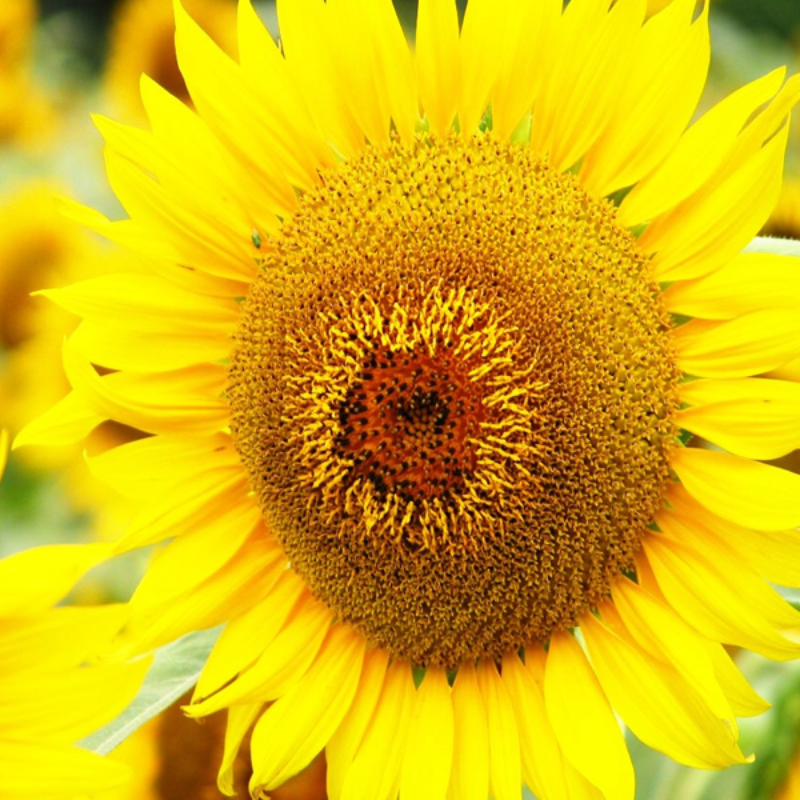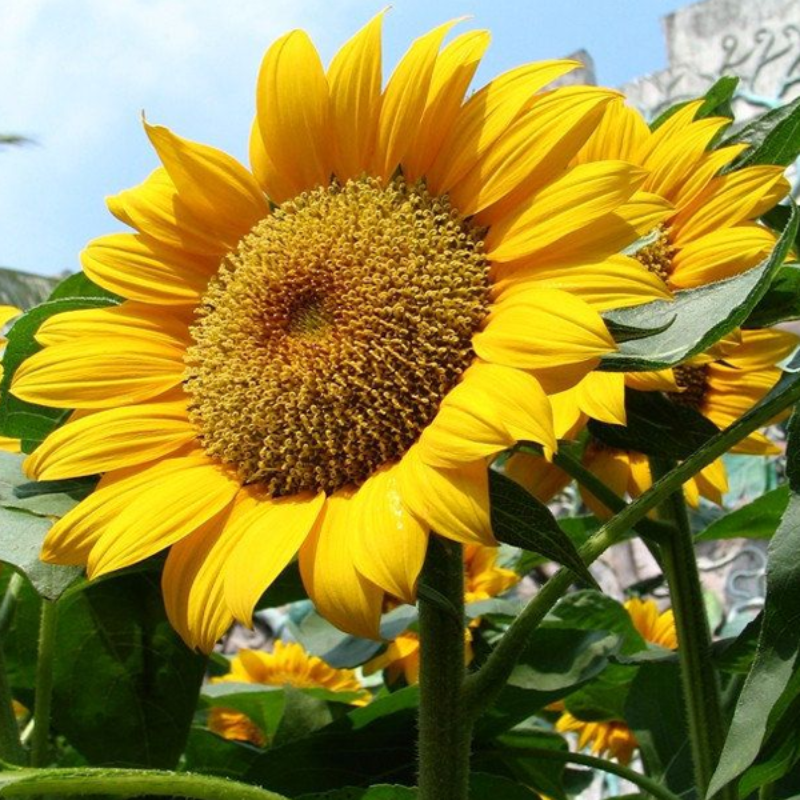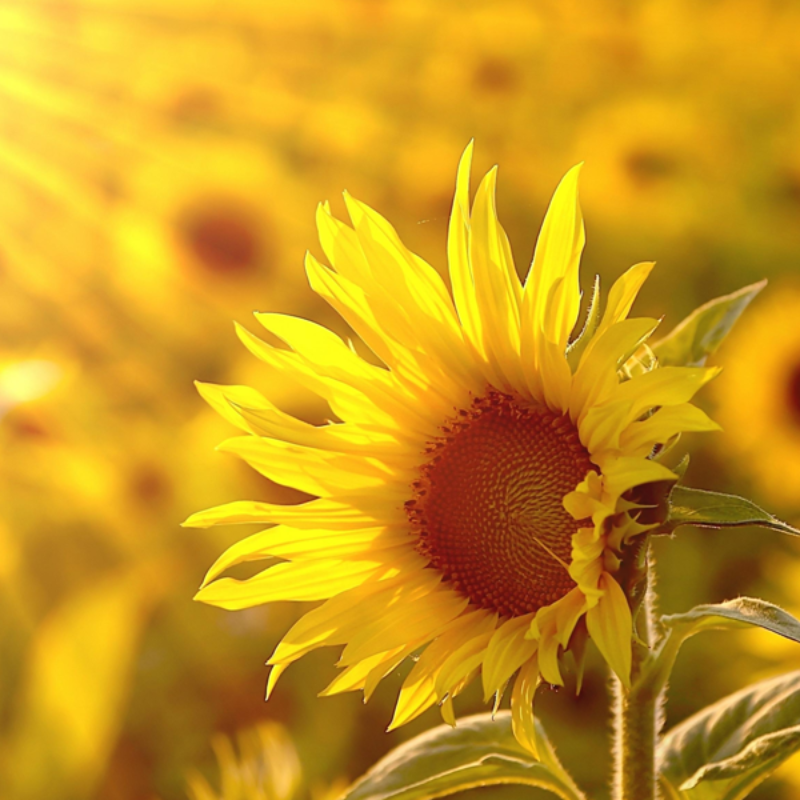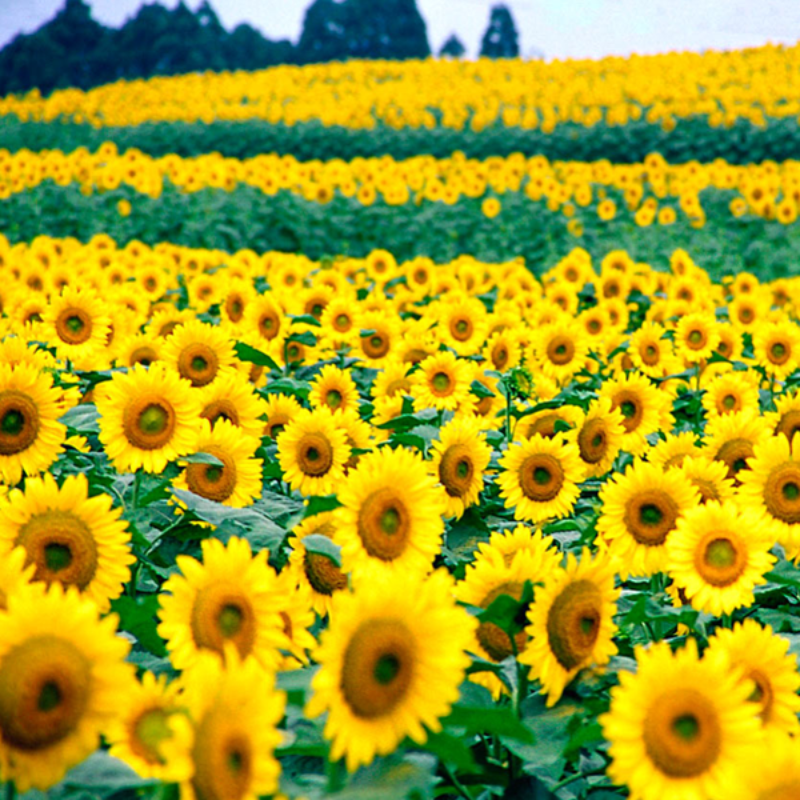- Species and varieties: Helianthus annuus, commonly known as the common sunflower. The 'Mammoth Russian' variety is known for its large size and impressive height, often reaching up to 12 feet tall with flower heads that can be over a foot in diameter.
- Hybrid or heirloom: The Mammoth Russian sunflower is an heirloom variety, meaning it has been passed down through generations without genetic modification. It is prized for its large seeds, which are excellent for eating or feeding to birds.
- Pruning and training: Mammoth Russian sunflowers do not require pruning. However, they may need staking or support to prevent them from toppling over due to their height and the weight of their large flower heads. Planting them in a sheltered location can also help protect them from strong winds.
- Fertilization needs: These sunflowers benefit from a balanced fertilizer applied at planting time. Additional feeding with a high-phosphorus fertilizer can promote strong root development and flowering. Avoid over-fertilizing with nitrogen, as this can lead to excessive foliage growth at the expense of flowers.
- Hardiness zones: Mammoth Russian sunflowers are suitable for USDA hardiness zones 3 through 9. They are quite adaptable and can be grown in a wide range of climates.
- Climate requirements: These sunflowers thrive in full sun and prefer well-drained soil. They are drought-tolerant once established but will perform best with regular watering, especially during dry periods. They require a long growing season of 70 to 100 days to reach maturity.












